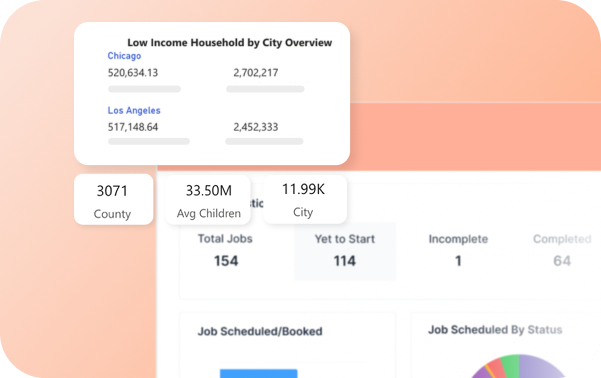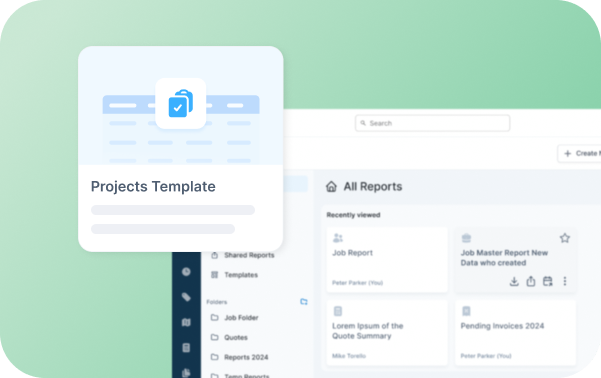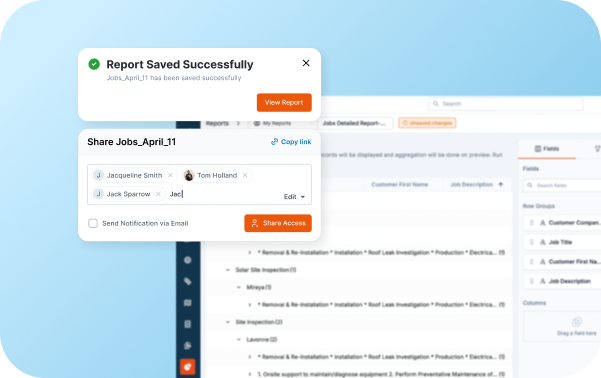Reporting and Analytics
Know your metrics and make smarter decisions with real-time dashboards, ready-to-use reports, and self-serve custom reports. From predefined reports to fully customizable ones built with our drag-and-drop interface, you have everything you need to track performance, spot trends, and take action without IT expertise.

I was thrilled about the custom notifications and the easy-to-use dashboard that gives me a bird’s-eye view of what’s happening in real time.

Get real-time visibility into your field service performance at a glance. Customize your field service dashboard and get faster insights into your workflows, revenue, and customers.


Get reporting off the ground quickly with 50+ pre-designed reports and over 9 ready-to-use templates. You can also build custom reports to best suit your business needs.
Build the report you need with a flexible drag-and-drop report builder. No coding required. Make insights accessible with scheduled delivery and easy sharing.

With Zuper’s intuitive reporting engine, you can create custom reports that drive smarter decisions across your field operations. Whether you need job summaries, technician performance, or customer insights, you’ll spend less time pulling data and more time acting on it.